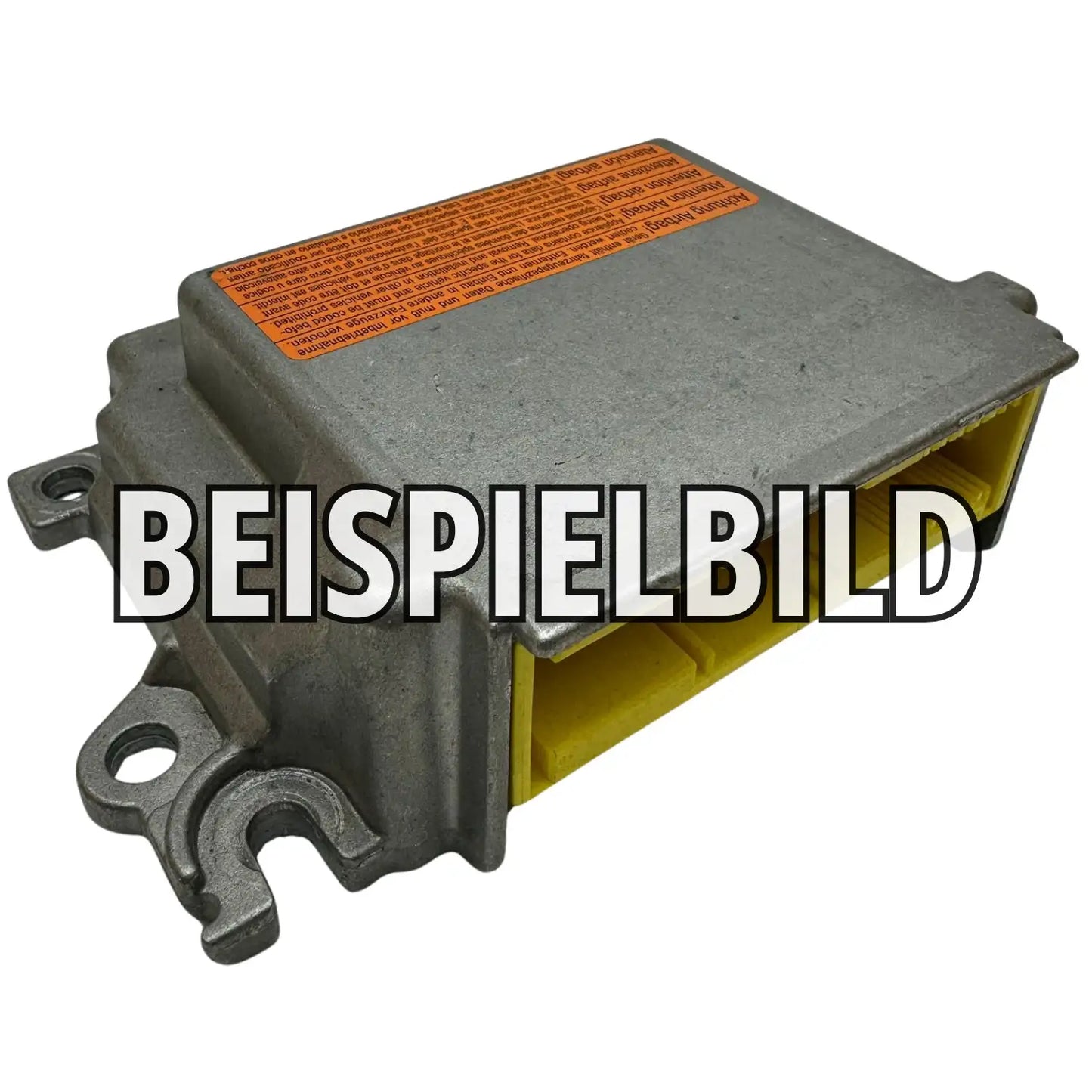What is a Nissan Altima L30 airbag control unit?
The Nissan Altima L30 airbag control unit is the central safety unit that activates all occupant restraint systems, such as airbags and seatbelt pretensioners, in the event of an accident. It continuously monitors sensors, stores relevant crash data, and ensures the proper functioning of all airbag modules and the entire Supplemental Restraint System (SRS) in the vehicle.
This module processes crash information in milliseconds to precisely trigger the safety systems. A functioning control unit is crucial for vehicle safety and driver and passenger protection.
After an accident, crash data stored in the module can be deleted to make it operational again.
Why is the Nissan Altima L30 airbag control unit defective?
The Nissan Altima L30 airbag control unit can fail because it stores crash data after an impact, disabling the system, or due to internal electronic errors that lead to communication disruptions and failures. A faulty module often indicates a persistent airbag warning light in the dashboard. This requires professional diagnosis and repair at a specialized workshop.
A common cause of failure is the module being blocked by crash data stored after an accident. Age-related electronic defects or voltage spikes can also lead to a defective or broken control unit.
Such internal errors can disrupt the module's communication with other vehicle systems and disable the airbag system. Early diagnosis is crucial to identify the cause of the problem and initiate the necessary repair.
Common error codes for Nissan Altima L30 airbag control unit repair
In Nissan Altima L30 airbag control module repairs, specific trouble codes in the airbag control system (SRS) signal problems directly within the control module, such as communication errors or internal defects. These DTCs are crucial for precise diagnosis, determining whether a reset, repair, or replacement of the module is necessary, and restoring vehicle safety.
- **B0001:** This code indicates a fault in the driver airbag module, often directly related to a faulty airbag control module. Diagnostics can determine whether a reset or repair is necessary.
- **B1000:** Indicates a general communication error between the airbag control unit and other systems in the vehicle. This failure can affect all airbag functionality.
- **B1239:** Indicates an internal defect in the airbag control module (airbag computer module), which typically requires a reset or extensive repair. This problem often causes the airbag light to illuminate.
- **B1414:** Also indicates an airbag control module fault that can occur after an event or for no apparent reason and requires a module reset.
- **U1010:** This error code indicates CAN bus communication problems on the airbag control unit, which impairs data transmission and directly affects the functionality of the module.
What part numbers are available for the Nissan Altima L30 airbag control unit repair?
For Nissan Altima L30 airbag control unit repairs, various OEM part numbers are relevant, ensuring an exact match for compatibility with specific model years. Finding the correct part number is essential for a successful replacement or reset, as each version must be programmed to the specific vehicle's VIN to ensure proper airbag system function.
It's crucial to check the part number on the original part to ensure compatibility. The following OEM part numbers are known for the Nissan Altima L30 airbag control module:
- **98820-3TA9C:** This is a genuine Nissan OEM part number verified by official Nissan parts dealers for the control module.
- **988203TA0B:** Another number verified by Nissan as an OEM part that also fits the Altima L30 airbag control module.
- **28555-3E121:** This OEM part number from the Nissan catalog is valid for older models, such as the Nissan Altima L30 from approximately 1994, and has been confirmed as an airbag control module.
- **98820-9HS9A:** An OEM module for newer model years (2015-2018) Nissan Altima that replaces part number 98820-9HS9B.
Regardless of the exact part number, programming the control unit to the vehicle's vehicle identification number (VIN) is always mandatory after a replacement or reset. A reset service is often a cost-effective alternative to purchasing a new module to restore the functionality of a defective module.


